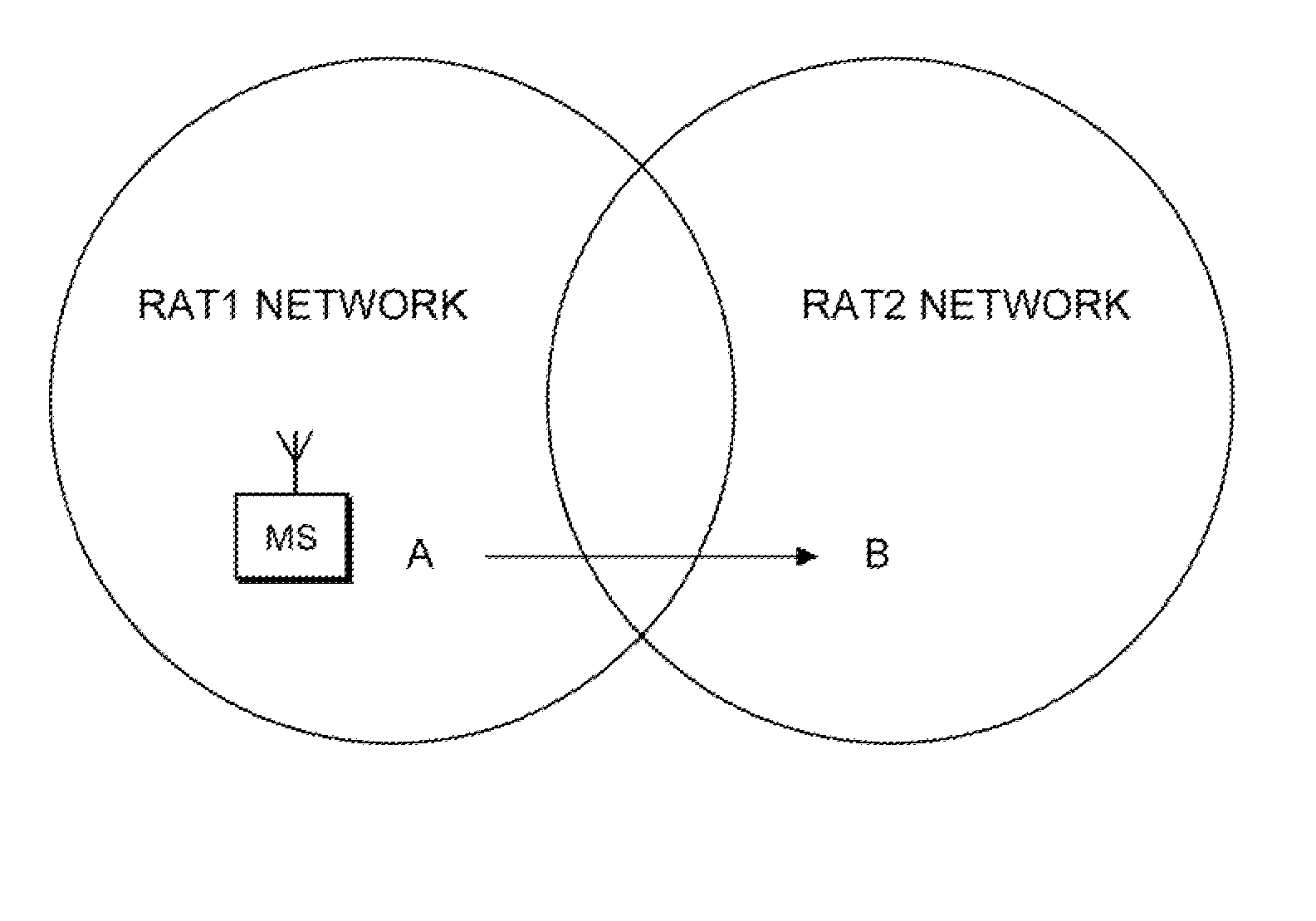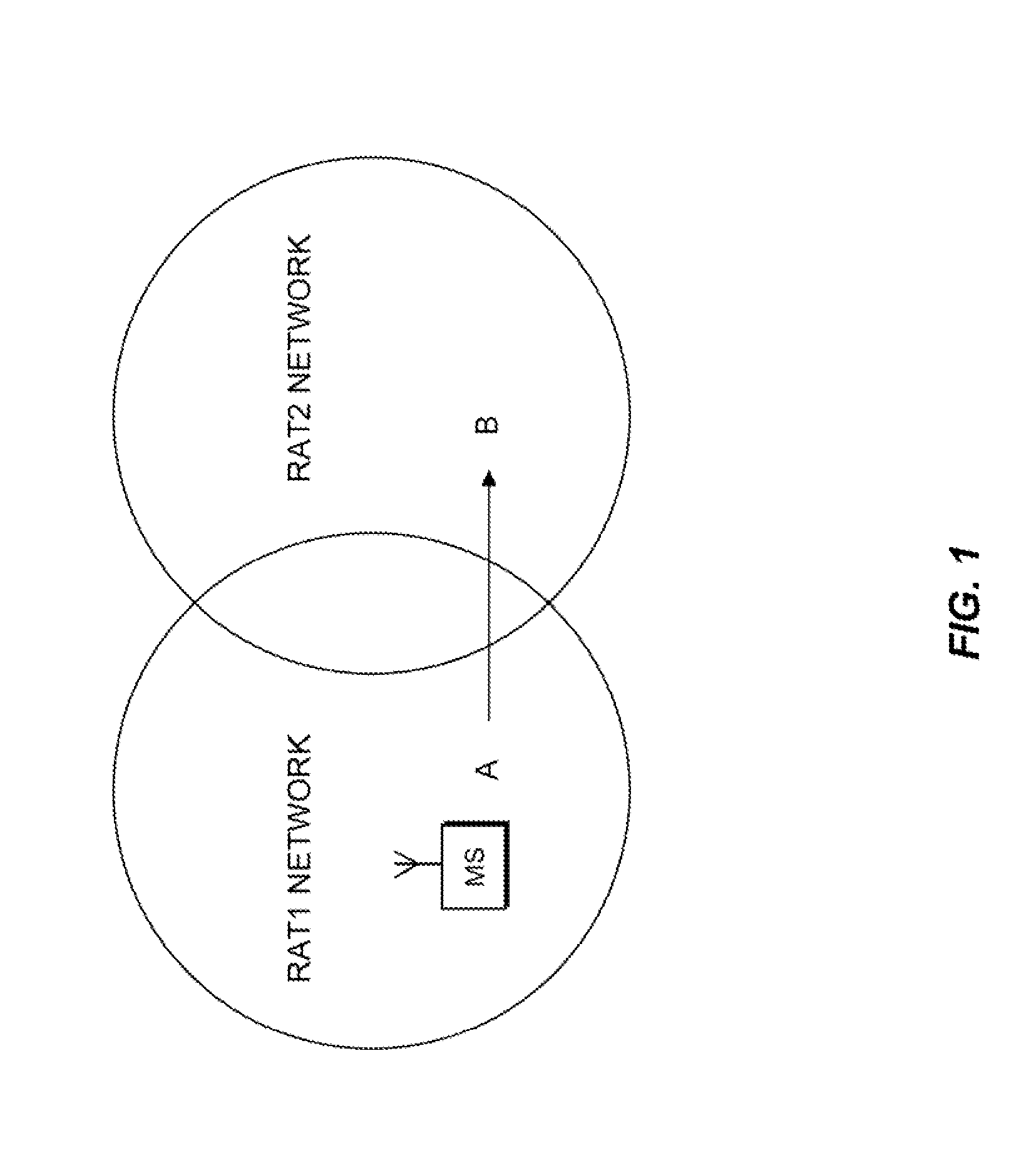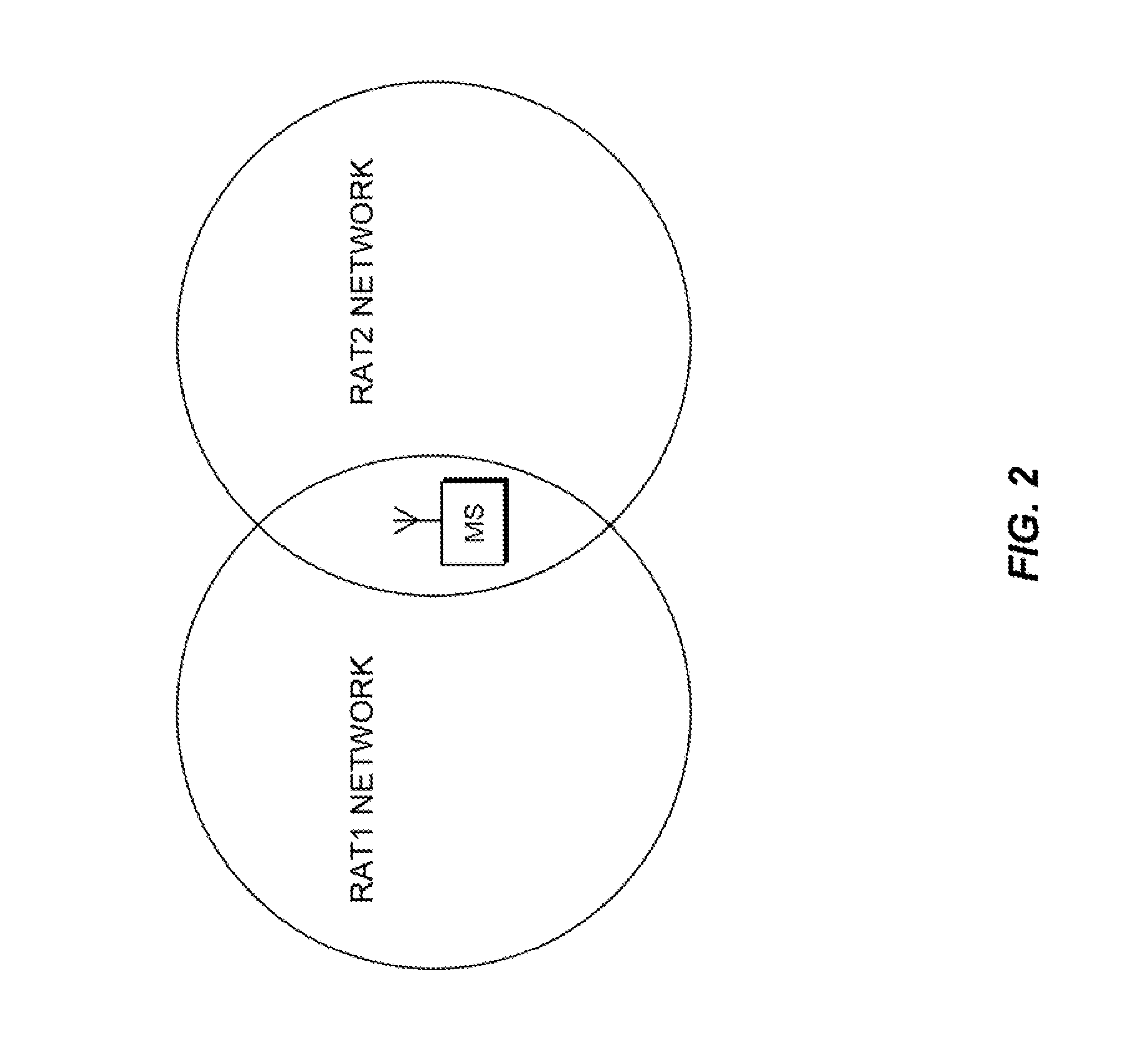Reducing resource allocations for inter-technology handover between wireless communication networks
a technology of wireless communication network and resource allocation, applied in the field of wireless radio communication, can solve the problems of resource allocation schemes that do not provide optimal resource utilization, bearer connections, and inability to meet the needs of users, and achieve the effect of reducing the number of session contexts, and reducing the number of resource allocation schemes
- Summary
- Abstract
- Description
- Claims
- Application Information
AI Technical Summary
Benefits of technology
Problems solved by technology
Method used
Image
Examples
first embodiment
[0038]FIG. 6 shows the present invention where a target network initiates an inter-technology handover via a network-initiated handover procedure or idle-mode exit procedure to force the MS to handover to the target network.
[0039]In step 1, the MS is receiving services from its current serving network, as is known in the art.
[0040]In step 2, the MS detects the presence of a heterogeneous technology target network and initiates network entry and session pre-registration procedures at the target technology network. Network entry and session pre-registration signaling procedures between the MS and target network are completed via a signaling tunnel established among the MS, serving network, and target network SFF and GW controller, as is known in the art. Upon successful session pre-registration at the target network and transitioning to the active state, the MS may optionally initiate idle-mode entry procedures with the target network by sending a message such as the DREG-REQ message ...
second embodiment
[0046]FIG. 7 shows the present invention where a target network initiates an inter-technology handover via a network-initiated handover procedure or idle-mode exit procedure to force the MS to handover to the target network. In this embodiment the MS rejects handover initiated by the target technology network.
[0047]In step 1, the MS is receiving services from its current serving network, as is known in the art.
[0048]In step 2, the MS detects the presence of a heterogeneous technology target network and initiates network entry and session pre-registration procedures at the target technology network. Network entry and session preregistration signaling procedures between the MS and target network are completed via tunneling among the MS, serving network, and target network SFF and GW controller, as is known in the prior art. Upon successful session pre-registration at the target network and transitioning to the active state, the MS may optionally initiate idle-mode entry procedures wit...
sixth embodiment
[0058]FIG. 11 shows the present invention. Upon completion of session pre-registration and idle-mode entry in the target technology network, the MS exits idle-mode and enters active or pseudo-active mode while continuing to receive services from its current serving network In step 5, in accordance with the present invention, the MS initiates handover to the target technology network. In step 6, the MS receives service from the target network.
[0059]In an optional embodiment, during or after completion of the session registration procedure, the target RAT can notify the MS how long the session context will be maintained at the RAT before being released. If the MS doesn't complete the inter-RAT handover before timer expiry, it assumes the context has been deleted. Alternatively, a dual-mode MS is configured with a session timer during provisioning. If the MS does not complete the inter-RAT handover before timer expiry, it assumes the context has been deleted.
[0060]FIG. 12 illustrates a...
PUM
 Login to View More
Login to View More Abstract
Description
Claims
Application Information
 Login to View More
Login to View More - R&D
- Intellectual Property
- Life Sciences
- Materials
- Tech Scout
- Unparalleled Data Quality
- Higher Quality Content
- 60% Fewer Hallucinations
Browse by: Latest US Patents, China's latest patents, Technical Efficacy Thesaurus, Application Domain, Technology Topic, Popular Technical Reports.
© 2025 PatSnap. All rights reserved.Legal|Privacy policy|Modern Slavery Act Transparency Statement|Sitemap|About US| Contact US: help@patsnap.com



